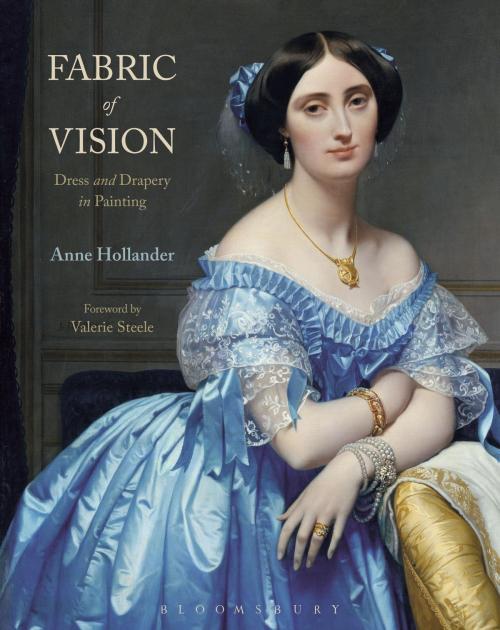Fabric of Vision
Dress and Drapery in Painting
Nonfiction, Art & Architecture, General Art, Fashion, Art History| Author: | Anne Hollander | ISBN: | 9781474269636 |
| Publisher: | Bloomsbury Publishing | Publication: | September 22, 2016 |
| Imprint: | Bloomsbury Visual Arts | Language: | English |
| Author: | Anne Hollander |
| ISBN: | 9781474269636 |
| Publisher: | Bloomsbury Publishing |
| Publication: | September 22, 2016 |
| Imprint: | Bloomsbury Visual Arts |
| Language: | English |
Clothing appears in all forms of figurative painting, often taking up two thirds of a frame; yet it can often go unnoticed. Far more than a simple means of identifying the status or occupation of a figure, clothes and cloth are used creatively by artists to hint at ambiguities in character, adjust the emotional temperature, direct the eye or make subtle allusions.
Drawing on works by artists over a period of six centuries, from Giotto to El Greco, Matisse to Cindy Sherman, the author reveals through paintings, fashion plates, photographs and film stills how drapery in art evolved from Renaissance extravagance to Neoclassical simplicity at the end of the 18th century, and has extended to infinite uses in all genres of Modern art.
First published in 2002 to accompany an exhibition of the same name at the National Gallery, London, this beautifully illustrated - and beautifully written - book by pioneering art historian and critic Anne Hollander, is reissued with a new Foreword by Valerie Steele. As penetrating and insightful as when it was first published, it remains a must-read for today's generation of students and anyone with an interest in art and fashion.
Clothing appears in all forms of figurative painting, often taking up two thirds of a frame; yet it can often go unnoticed. Far more than a simple means of identifying the status or occupation of a figure, clothes and cloth are used creatively by artists to hint at ambiguities in character, adjust the emotional temperature, direct the eye or make subtle allusions.
Drawing on works by artists over a period of six centuries, from Giotto to El Greco, Matisse to Cindy Sherman, the author reveals through paintings, fashion plates, photographs and film stills how drapery in art evolved from Renaissance extravagance to Neoclassical simplicity at the end of the 18th century, and has extended to infinite uses in all genres of Modern art.
First published in 2002 to accompany an exhibition of the same name at the National Gallery, London, this beautifully illustrated - and beautifully written - book by pioneering art historian and critic Anne Hollander, is reissued with a new Foreword by Valerie Steele. As penetrating and insightful as when it was first published, it remains a must-read for today's generation of students and anyone with an interest in art and fashion.















